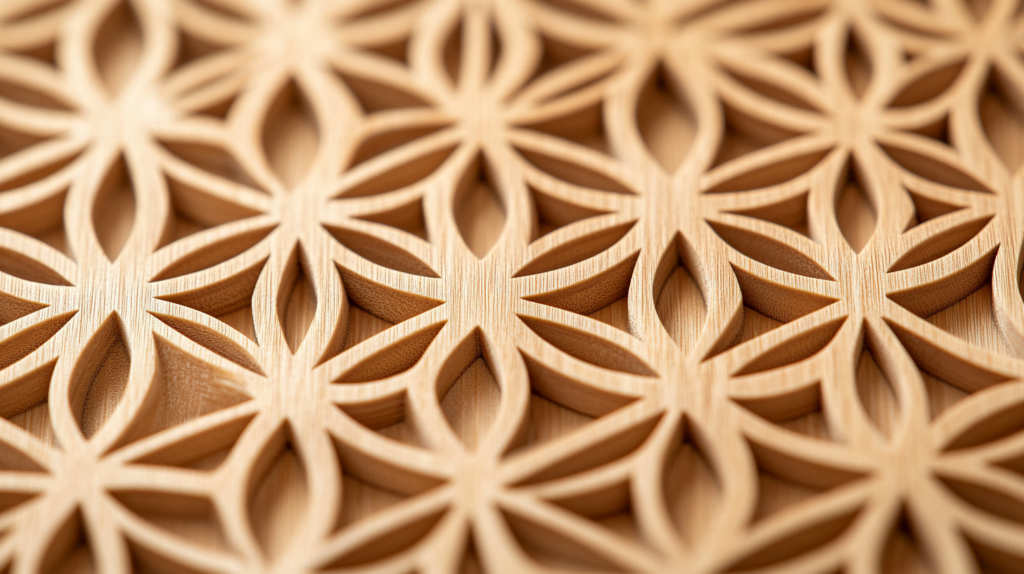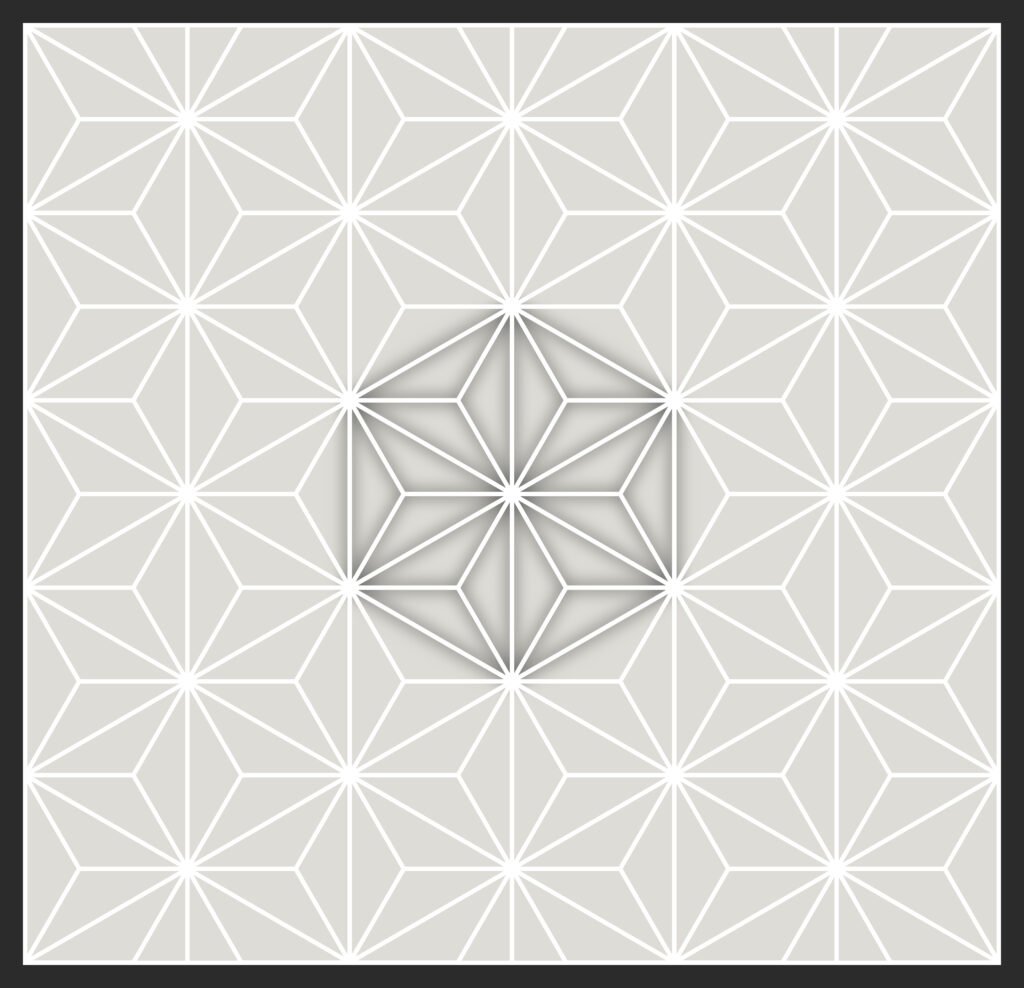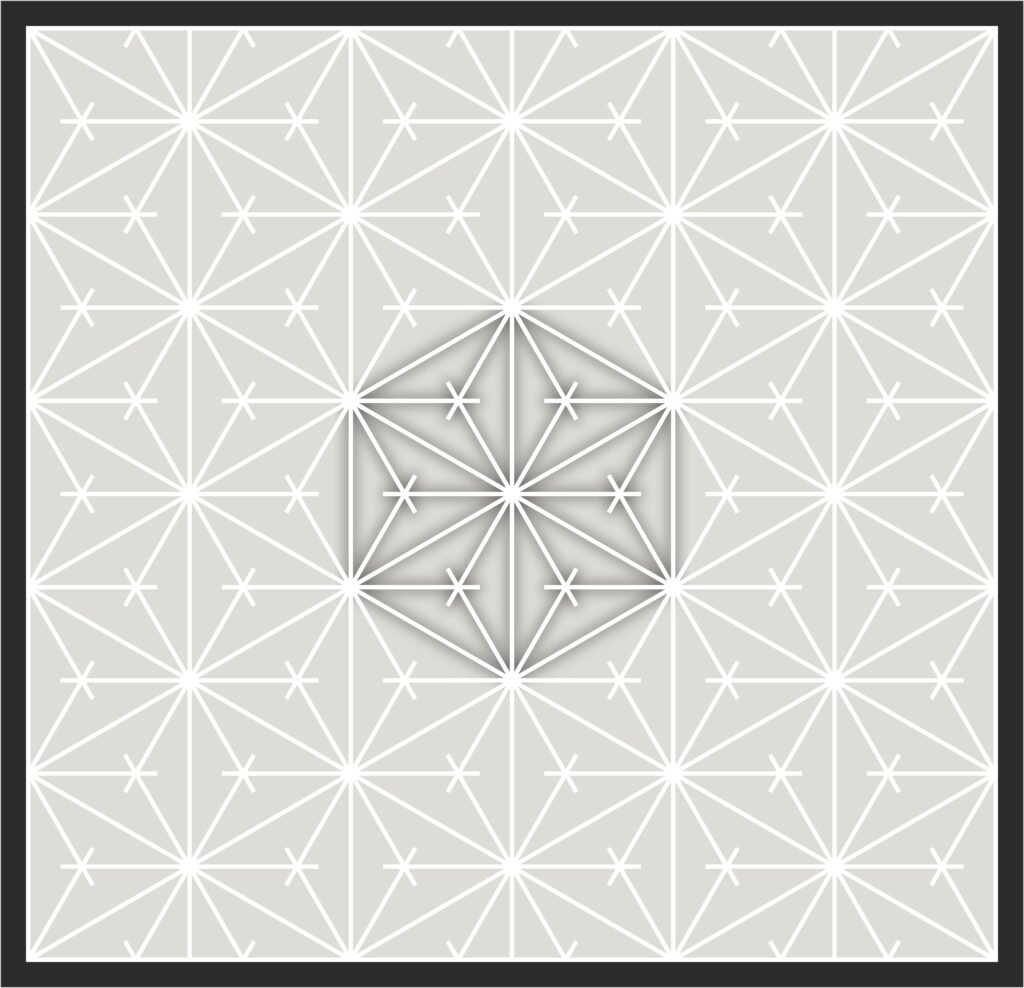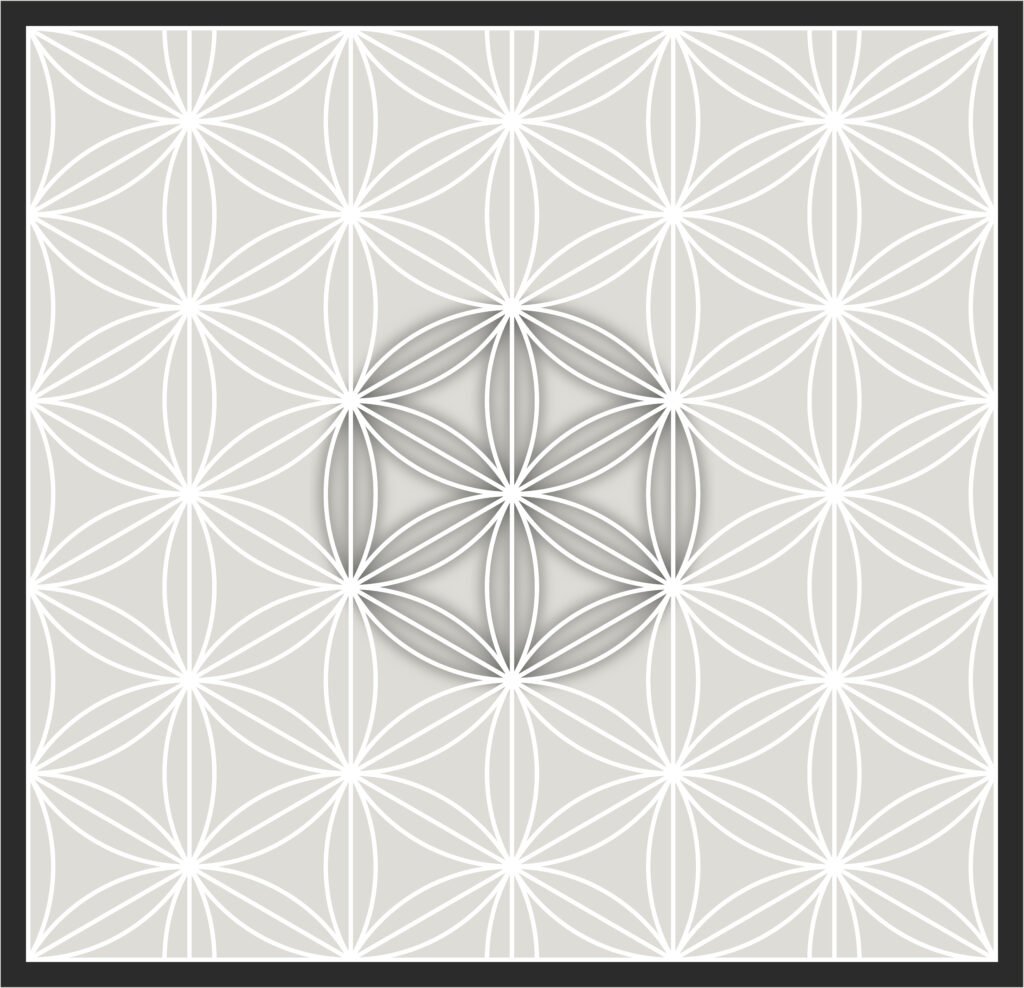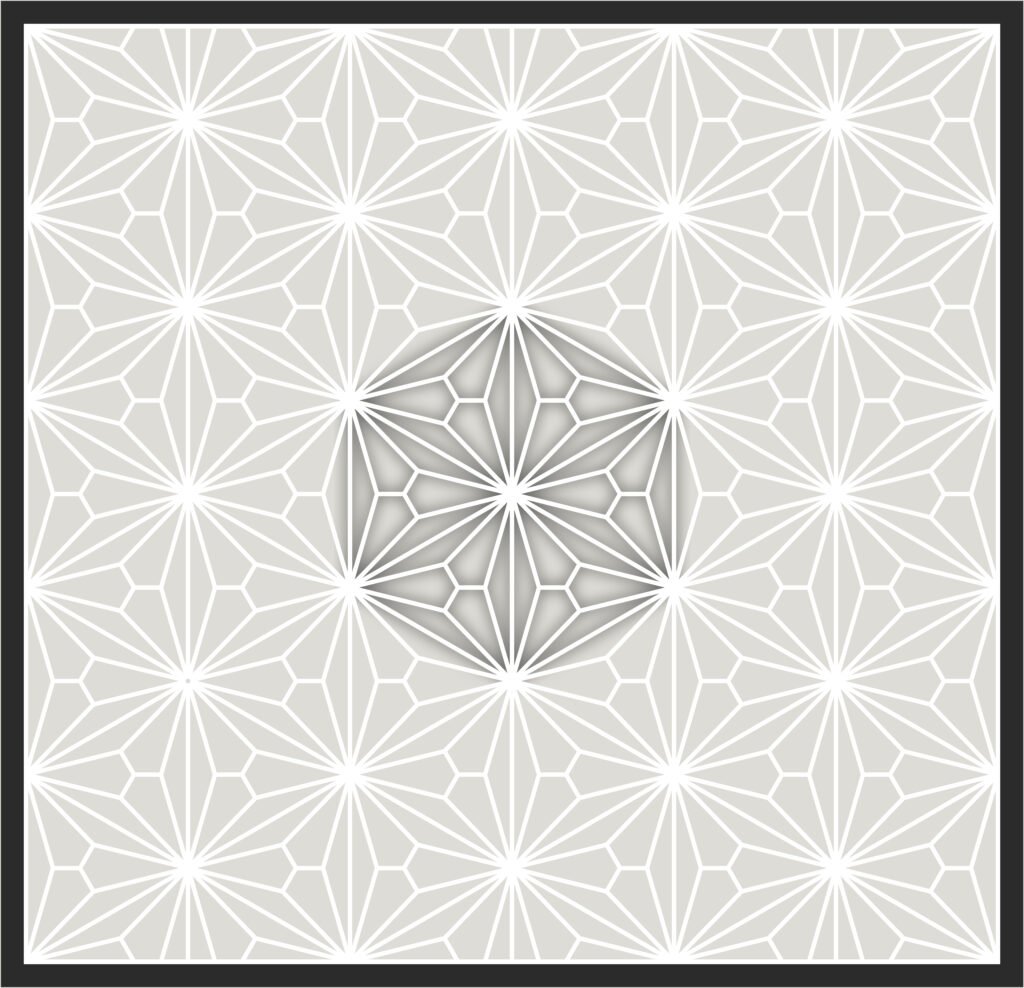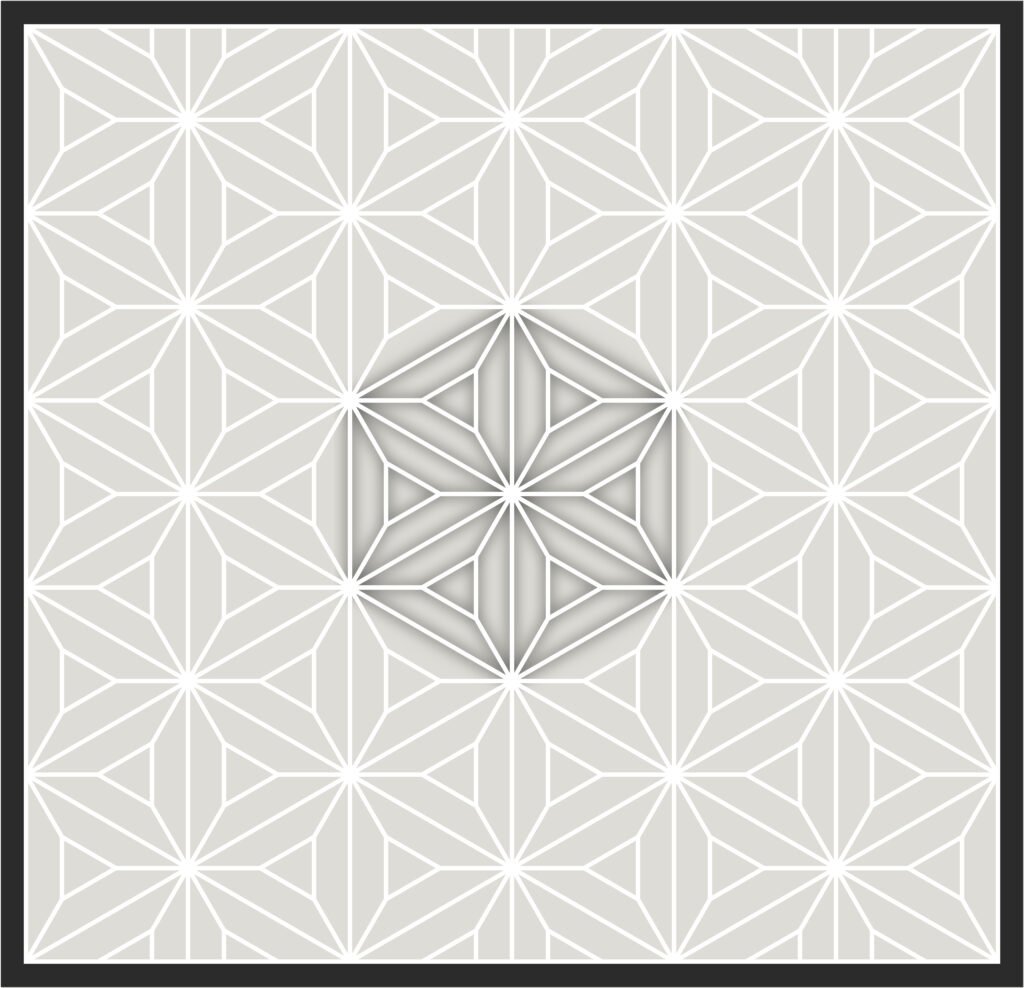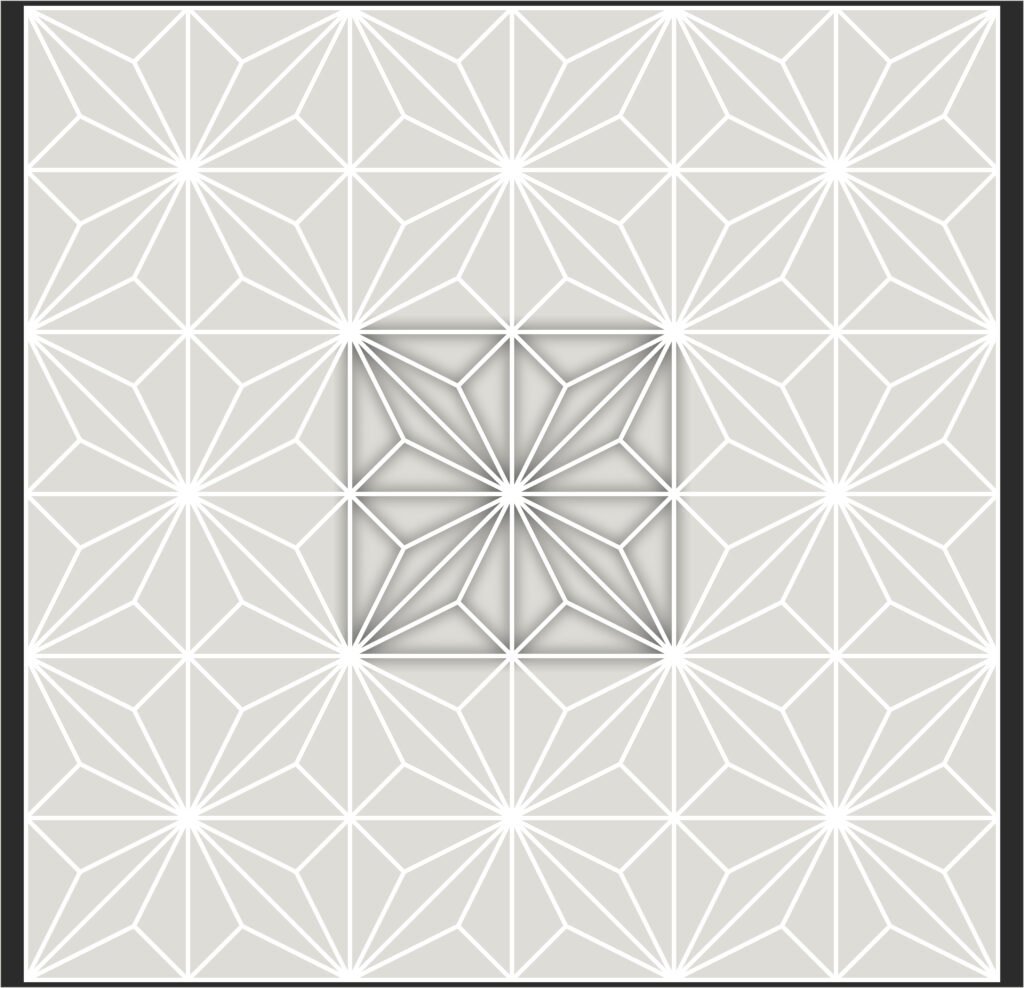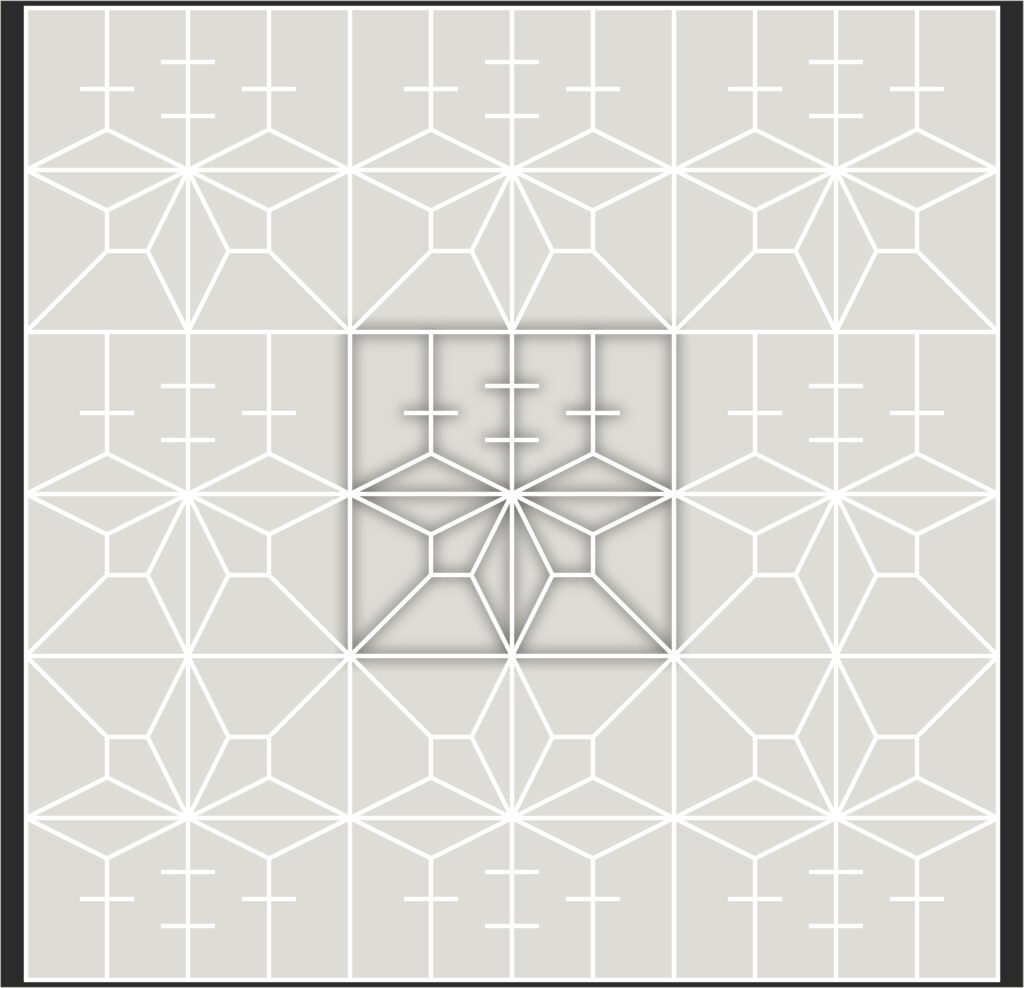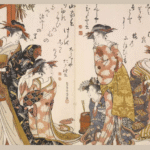Among Japan’s traditional architecture and crafts, few elements radiate such distinctive beauty as “Kumiko.” These delicate wooden lattice works create geometric patterns that transcend mere decoration, serving as mirrors reflecting Japanese prayers, wishes, and perspectives on nature. In this article, we focus on the “Asanoha” (hemp leaf) pattern and its derivatives, delving deep into their design backgrounds and symbolism.
To View the Complete List of 40 Kumiko Patterns:
* Click on each pattern illustration to view and download a clean SVG file via Wikimedia Commons. All files are freely available for personal or educational use.
What Are Kumiko Patterns: A Crystallization of Japanese Aesthetic Sensibility
Kumiko is a traditional architectural decorative technique that joins wooden pieces together without using nails or metal fittings. Developing from the Heian period (794-1185) and particularly refined during the Edo period (1603-1868), this technique combines practicality with artistry and is considered one of the aesthetic pinnacles of Japanese architecture.
The patterns created by Kumiko craftsmen each carry embedded meanings and wishes, expressing Japanese reverence for nature, sensitivity to seasons, and prayers for familial prosperity. These Kumiko patterns meaning extends beyond their visual appeal, representing cultural values that have been passed down through generations. Today, these patterns are widely applied in contemporary interior design and crafts, breathing in new contexts.
Nine Asanoha-Based Kumiko Patterns: Design and Symbolism
Asanoha (Hemp Leaf)
The Asanoha pattern, one of Japan’s most widely recognized traditional designs, features lines radiating from the center of a hexagon, elegantly mimicking the shape of hemp leaves. With over a thousand years of history—appearing on Buddhist statues’ garments during the Heian period—this pattern is deeply rooted in Japanese culture.
Hemp is known for its strength and vitality, reportedly growing about 4 cm per day. Due to this remarkable life force, the Asanoha pattern came to symbolize wishes for children’s healthy growth, and from the Edo period onward, it was commonly used on baby clothes and children’s garments. The angular shape was also believed to have protective powers against evil spirits, serving as a talisman particularly for preventing childhood illnesses and misfortunes.
The Kumiko patterns meaning of Asanoha centers on growth, protection, and vitality—universal values that continue to resonate today. Its timeless beauty appears in architectural elements like shoji screens and ranma transoms, kimono, washi paper products, and various other applications.
Tsuno Asanoha (Horned Hemp Leaf)
Tsuno Asanoha is a variation of the standard hemp leaf pattern with horn-like projections added to the basic hexagonal structure. While maintaining the fundamental geometry, it presents a more complex and delicate impression, evoking the beauty of snowflakes.
Similar to the original Asanoha, this pattern carries wishes for children’s growth and health, but the added “horns” are believed to enhance its power to ward off evil spirits. The Kumiko patterns meaning in this case becomes more pronounced with these additional protective elements. Particularly suitable for expressing winter aesthetics, this pattern also appears in crafts from snowy regions of Japan.
Shippou Asanoha (Seven Treasures Hemp Leaf)
Shippou Asanoha represents the pinnacle of advanced Kumiko techniques, integrating curves with straight lines. The term “Shippou” refers to the seven treasures mentioned in Buddhist scriptures: gold, silver, lapis lazuli, coral, agate, crystal, and pearl shell. The pattern combines continuous ring motifs symbolizing these treasures with the hemp leaf design.
Requiring bent wood, this design demands exceptional craftsmanship and skilled technique. The Kumiko patterns meaning here merges the infinite chain symbolism of circles (Shippou) with the growth energy of triangles (Asanoha), embodying the wish that “auspicious human relationships continue eternally.”
Yae Asa (Layered Hemp)

Yae Asa, meaning “multiply layered hemp,” features more leaf overlapping than standard Asanoha patterns. Technically advanced, this design requires the skills of experienced craftsmen.
Just as double-layered flowers appear more luxurious and beautiful, Yae Asa presents a more elaborate impression than regular Asanoha. The Kumiko patterns meaning intensifies here, with protective and growth-promoting wishes expressed in multiple, reinforcing layers. Often used in formal shoin-zukuri and sukiya-zukuri architecture, its presence lends dignity to spaces.
Futae Asanoha (Double Hemp Leaf)
Futae Asanoha shows hemp leaf patterns in double layers. The depth and three-dimensionality created by this overlapping enriches what would otherwise be a simple geometric pattern.
The Kumiko patterns meaning of the original Asanoha (growth, health, protection) becomes amplified, representing stronger prayers. This pattern is particularly associated with wishes for fertility and offspring, making it appropriate for celebratory occasions.
Kawari Asanoha (Modified Hemp Leaf)
Based on traditional Asanoha designs, Kawari Asanoha adds triangular “leaves” or modifies the basic shape. Different regions and craftsmen have developed various versions, allowing creativity while honoring tradition.
While incorporating the element of “change” (kawari), this pattern maintains the fundamental meanings of Asanoha (growth and health). The Kumiko patterns meaning here symbolizes Japanese culture’s duality—adapting to new eras while respecting tradition.
Kikyō Asanoha (Bellflower Hemp Leaf)
This pattern combines the autumn flower kikyō (bellflower) with hemp leaves. The bellflower, one of the seven autumn flowers, has star-shaped five-petaled blooms associated with concepts like “unchanging love,” “sincerity,” and “eternal love.” Its medicinal properties also made it a symbol of health and longevity.
The Kumiko patterns meaning fuses Asanoha’s wishes for growth and health with the bellflower’s connotations of love and sincerity, creating a deeply symbolic motif for family health and lasting bonds. Its ability to express autumn aesthetics gives it special significance in Japanese culture, which places high value on seasonal transitions.
Kaku Asa (Square Hemp)
Kaku Asa incorporates hemp leaf patterns within a grid of squares. The regular grid formed by perpendicular lines expresses stability and order.
Beyond the protective and growth aspects of hemp leaves, the added symbolism of squares representing “stability” and “solid foundation” creates a composite wish for “healthy growth upon a stable foundation.” The Kumiko patterns meaning becomes multi-layered in this design. Frequently employed in architectural elements of traditional Japanese rooms like shoji screens and transom panels, it holds an important position among patterns symbolizing Japanese architectural beauty.
Kiri Asanoha (Paulownia Hemp Leaf)
This dignified pattern combines paulownia motifs with hemp leaves. The paulownia tree, traditionally revered as the dwelling place of the mythical phoenix, has been used in imperial and aristocratic family crests.
The Kumiko patterns meaning here merges the life force and growth symbolism of hemp leaves with the nobility and formal elegance of paulownia, suggesting “growth under high ideals” or “refined development.” Particularly in samurai society, it was valued as a symbol of “peace throughout the land” and used in formal shoin-zukuri architecture. Its dignified presence lends a distinctive elegance to contemporary spaces as well.
Contemporary Value of Asanoha-Based Patterns
These Asanoha-based Kumiko patterns carry cultural and spiritual value beyond mere decoration. In contemporary design, their universal beauty and profound meanings have been reevaluated and applied across interior design, fashion, graphic design, and various other fields.
Recent years have seen growing global interest in Japanese traditional patterns as sustainable design and harmony with nature gain importance. These patterns abstract natural forms while embedding spirituality—an approach that resonates with modern sensibilities. The wisdom and aesthetic sense of our ancestors, expressed through Kumiko patterns meaning, speak to us across time.
These Asanoha-based Kumiko patterns represent the crystallization of Japanese aesthetics and spiritual culture. The complex beauty born from repetition and variation of simple forms connects to Japan’s unique aesthetic sensibilities such as “yūgen” (profound grace) and “wabi-sabi” (imperfect beauty).
Through the fusion of traditional techniques with contemporary design sensibilities, Kumiko patterns continue to evolve, adorning our lives in new contexts. The timeless appeal and rich Kumiko patterns meaning ensure these designs will remain relevant far into the future.
Next time, we will analyze the “Hishi and Kōshi” (diamond and lattice) series of patterns. Stay tuned for more insights into the fascinating world of Kumiko craftsmanship.
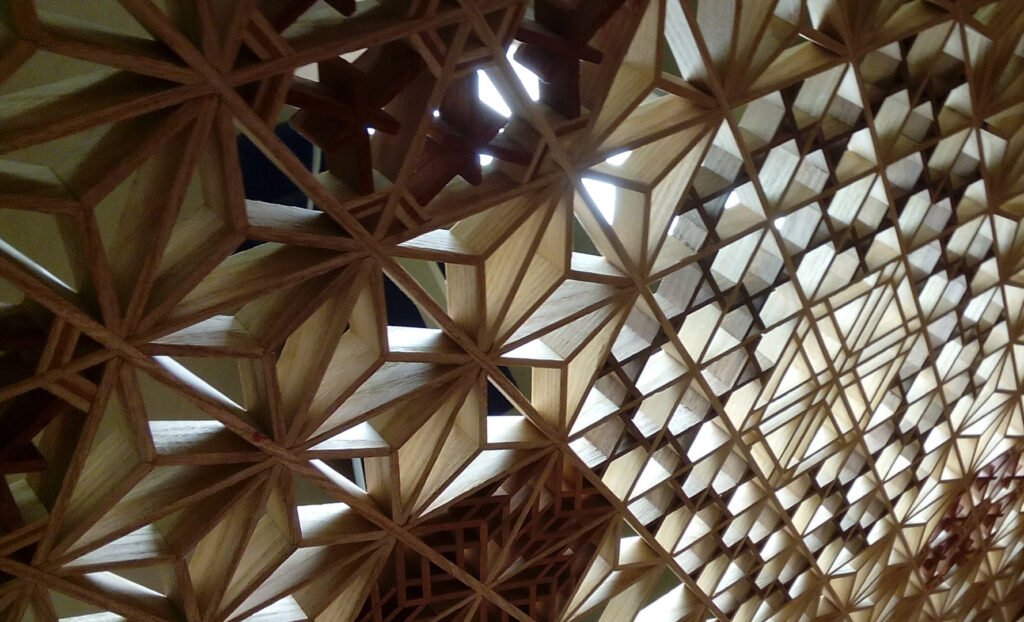
“Kumiko Patterns: Tradition and Symbolism” Series
This “Kumiko Patterns: Tradition and Symbolism” series will be published in four consecutive installments. If you’re intrigued by these traditional Japanese wooden lattice designs and their cultural meanings, we invite you to explore each article through the links below as they become available. Each installment delves deeply into one category, revealing the historical context, symbolic significance, and contemporary applications of these remarkable patterns.
- Kumiko Patterns: Tradition and Symbolism Part.1 – The Sacred Geometry of Hemp Leaf Designs
- Kumiko Patterns: Tradition and Symbolism Part.2 – Diamond and Lattice Structures
- Kumiko Patterns: Tradition and Symbolism Part.3 – Tortoise Shell and Basketweave Artistry
- Kumiko Patterns: Tradition and Symbolism Part.4 – Distinctive Motifs and Combination Masterpieces
Thank you 🙂

